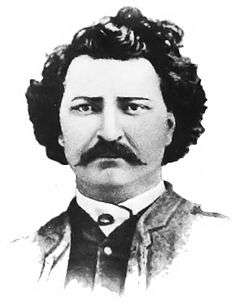Franco-Manitoban
| Franco-Manitobains | |
|---|---|
 Franco-Manitoban flag | |
|
| |
| Total population | |
| (51,280) | |
| Regions with significant populations | |
| Manitoba | |
| Languages | |
| Canadian French, Canadian English | |
| Religion | |
| Mainly Roman Catholic | |
| Related ethnic groups | |
| Franco-Albertan, Franco-Columbian, Franco-Ontarian, Fransaskois, French Canadians, Québécois, Acadians, Cajuns, French Americans, Métis, French |
Franco-Manitobans (French: Franco-Manitobains) are a community of French Canadians and other French-speaking people living in Manitoba. Most Franco-Manitobans have roots in Québec. However, many are of Métis and Belgian ancestry while others have ancestors that came directly from France, its former colonies and other francophone countries throughout the world (Congo, Laos, Vietnam, and Tunisia among others). Many have partial English, Scottish, Irish, Ukrainian and German / Mennonite ancestry through inter-marriages. The community is centred primarily in three districts in south-east Winnipeg, notably in Saint-Boniface, Saint-Vital and Saint-Norbert. There are smaller numbers of Franco-Manitobans living throughout the province as well.
Notable Franco-Manitobans include Métis nationalist Louis Riel, former Manitoba Premier Marc-Amable Girard, world-renowned writer Gabrielle Roy, international singer-songwriter Daniel Lavoie, journalist, entrepreneur, and magazine publisher Tyler Brûlé, current federal Member of Parliament Kevin Lamoureux, former federal Members of Parliament Ronald Duhamel, Raymond Simard and Robert Bockstael, former provincial MLAs Jean Allard, Albert Préfontaine, Edmond Préfontaine, Neil Gaudry and Laurent Desjardins, current member of the Canadian Senate Maria Chaput, professional hockey players Jonathan Toews and Travis Hamonic, and country singer Lucille Starr.
The province's primary French language post-secondary educational institution is l' Université de Saint-Boniface located in Saint Boniface.
Although 90% of the Franco-Manitoban community lives in the Greater Winnipeg area, rural Franco-Manitoban centres do exist in Notre-Dame-de-Lourdes, Saint-Claude, Saint-Pierre-Jolys, Sainte-Anne-des-Chênes, Saint-Adolphe, Saint-Alphonse, Sainte-Agathe, Letellier, Saint-Jean-Baptiste, Sainte-Rose-du-Lac, Saint-Malo, Île-des-Chênes, Lorette, La Broquerie, Saint-Laurent, Somerset, Marquette, Saint-Eustache, Saint-François-Xavier, Richer, Saint-Labre, Rathwell, Saint-Léon, Saint-Georges, Laurier, LaSalle, Tourond, La Rochelle, South Junction, Fisher Branch, Marchand, Bruxelles, Otterburne and Saint-Lazare.[1]
History
The Manitoba Act of 1870 had provided that English and French be co-official languages in the newly created Province of Manitoba (which initially included only the region surrounding Lake Manitoba). [2] However, in 1890, at the same time as the enactment of the Public Schools Act, the Manitoba Legislature passed another act which made English the sole official language in the Province.[3] Two years later, in 1892, the neighbouring Northwest Territories (which at the time covered the Canadian Prairies west of Manitoba) also abolished French as an official language.
Media
The Franco-Manitoban community is served by Radio-Canada's CKSB (Première Chaîne), CKSB-FM (Espace musique) and CBWFT (SRC Television), the community radio station CKXL and the weekly newspaper La Liberté.
See also
References
- ↑ Canadian Government Statistics on Franco-Manitobans.
- ↑ Manitoba Act, 1870, s. 23.
- ↑ An Act to Provide that the English Language shall be the Official Language of the Province of Manitoba, S.M. 1890, c. 14.





